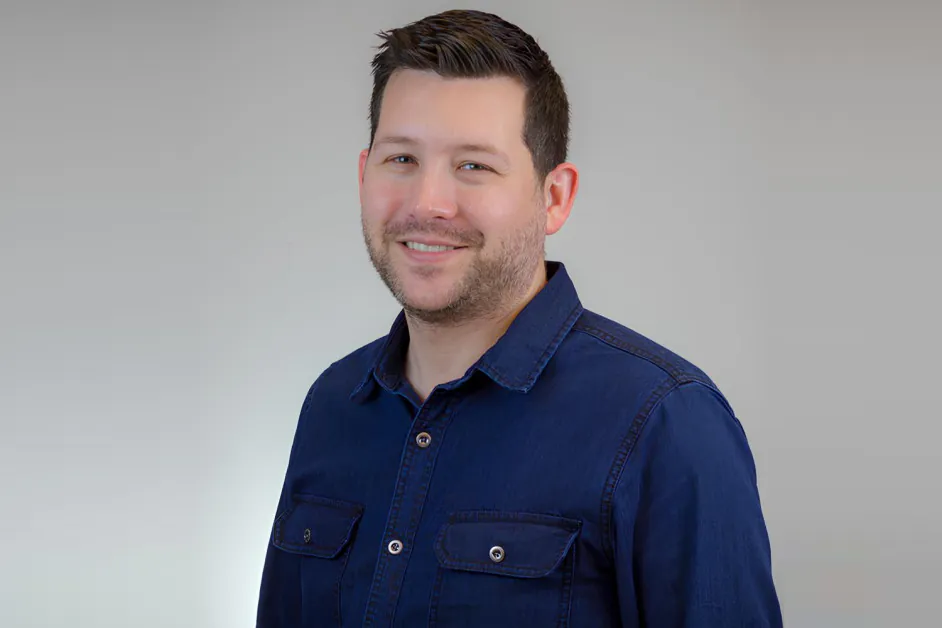Interviews
Jonathan Lacour, CTO at Mission – Interview Series

Jonathan Lacour, Chief Technology Officer (CTO) at Mission, has over 20 years of experience leading cloud, software, and product innovation. He joined Mission through the merger of Reliam, Stratalux, and G2 Tech in 2018, after serving as CTO of Reliam. Previously, he held senior leadership roles at DreamHost, co-founded the open-source networking company Akanda, and led product initiatives at Pictage. Throughout his career, Jonathan has focused on scaling cloud platforms and helping businesses harness transformative technologies.
Mission Cloud (a CDW company) is a specialized AWS partner offering end-to-end cloud and AI services. They help organizations migrate to, modernize, manage, and secure AWS environments, with expertise in generative AI, data analytics, cost optimization, and cloud operations. They ensure scalability and agility via managed services, professional consulting, and a platform (“Mission Control”) for cloud visibility and governance. Their track record includes over 350 AWS certifications, premier tier partnership status, and a client roster spanning health, finance, retail, media and more.
You’ve been a technologist since age 14 and have worked across industries from healthcare to hosting and cloud. How did those early experiences shape your perspective as a technology leader today?
I actually started even earlier than 14; My first experiences were on an Apple II in elementary school, then later on my dad’s original Macintosh. He was a pastor and used it to design newsletters and service programs, and I got hooked. By age 10, I was building little apps in HyperCard. That spark, the feeling that writing code is like making an incantation that turns into something real, still drives me today. Even as a CTO, I still write code most days because it keeps me connected to that sense of possibility. Over time, working in healthcare, document management, and startups taught me to pair that spark with empathy for the end user. I learned to care deeply about user experience, and about aligning technology with real problems people face. That blend of curiosity and customer focus is the through-line of my career.
At DreamHost, you were deeply involved in building out cloud services. How did that journey prepare you for your role now at Mission, where you’re helping enterprises scale their use of AWS and cloud technologies?
DreamHost gave me a hands-on education in what it actually takes to build and run cloud at scale. We designed compute and storage services, ran them at petabyte scale, and had to make them efficient, automated, and cost-effective down to the penny. That taught me how hard the economics of cloud really are, and how complex billing models can be for customers.
I also learned how intimidating AWS felt for many developers and SMBs. We tried to simplify with more approachable pricing and packaging. While we didn’t win the market there, the lessons were invaluable: I gained empathy for customer struggles and a deep understanding of the technical and operational challenges they face. That foundation now helps me guide enterprises at Mission through their AWS journey with both strategic insight and practical know-how.
You’ve co-founded companies and contributed to open-source projects like Akanda. How has your passion for open source and the IndieWeb influenced the way you approach enterprise-scale cloud and AI adoption?
Open source has been an accelerant throughout my career. I started running Linux servers as a teenager, writing code on commodity hardware, and realized that if something didn’t work the way I wanted, I could change it—or collaborate with a global community to make it better. That experience shaped how I think about distributed teams, iteration, and shared innovation.
At DreamHost, we were deeply involved in OpenStack and Ceph. I’ve contributed to Python projects for decades and was honored to be named a Fellow of the Python Software Foundation. All of that taught me how to operate in large, distributed communities with shared goals. Today, I run Mission much the same way. We’re geographically distributed, we collaborate virtually, and we build on one another’s work. That open-source mindset, transparency, contribution, and rapid iteration, is exactly what enterprises need when adopting cloud and AI at scale.
Mission has become one of the leading AWS Premier Consulting Partners. What differentiates Mission in helping enterprises not only migrate to the cloud but truly optimize and operationalize it?
We’re unique because we’re both broad and deep. We cover the entire cloud lifecycle: software resale, cost optimization, managed services, security, professional services—but we’re also deeply focused on AWS. Many firms are either resellers, consultants, or MSPs. Mission is all of those, working in concert, which allows us to deliver an end-to-end experience that very few partners can match.
With Mission now part of CDW, how does this expanded relationship enhance the value you can bring to enterprise clients?
CDW brings an incredible breadth of ISV partnerships and customer relationships. While Mission is laser-focused on AWS, CDW has paper with just about every major ISV out there, and hundreds of thousands of customers. That means we can now support clients not just in their AWS adoption, but also in how their third-party software integrates with AWS. It’s an expansion of our reach and our ability to create end-to-end solutions.
Many enterprises struggle to move beyond pilot AI projects. From your perspective, what are the most common barriers organizations face when trying to scale AI from proof-of-concept into production?
The biggest barrier is starting with technology instead of the business problem. Too many pilots are “we need an AI strategy” projects—not tied to outcomes, just driven by pressure from boards or investors. That almost guarantees they stay in the lab. There are also challenges with cost, talent gaps, and the sheer pace of change. The AI ecosystem is evolving so fast that best practices are still emerging, which makes enterprises hesitant to commit.
Can you share some strategies or frameworks you recommend to enterprises that want to operationalize AI successfully across their business?
Start with the business outcome. Define the problem you’re trying to solve, then evaluate if AI is the right tool. Look at proven patterns in the market (summarization, content acceleration, customer support) and use those as inspiration. Just as important, put governance and guardrails in place. With generative and agentic AI, you’re giving systems access to sensitive data and workflows. That means you need visibility, monitoring, and policies to guide safe adoption.
Beyond technology, what organizational or cultural changes do companies need to embrace to fully realize the benefits of AI?
They need to create a culture of saying “yes.” Too often, security or compliance teams default to no. But employees ask for AI tools because they make their work better. The faster leaders can move from “no” to “yes, with the right guardrails,” the faster innovation can happen. Listening to employees, enabling experimentation, and embracing a service mindset toward internal users are critical cultural shifts.
Cloud migration is notoriously challenging. What are the most common pitfalls you’ve seen organizations fall into during this process?
Most of the common pitfalls are well-documented: poor planning, cost overruns, and compliance issues. But the new wrinkle is AI. Companies are increasingly linking their cloud migrations to their AI strategies, moving data to the cloud specifically to power AI. That introduces new complexities, since AI patterns aren’t yet standardized. The pitfall is treating migration as just infrastructure when, for many, it’s now a data and AI initiative as well.
If you could give one piece of advice to enterprises about how to mitigate failure during cloud migration, what would it be?
Perfect is the enemy of good. Cloud is about agility and momentum, not getting everything right before you start. Move quickly, learn as you go, and prioritize incremental progress over perfection. Take advantage of the fact that in cloud, you can test, iterate, and evolve without the constraints of physical infrastructure.
Once an organization is “in the cloud,” what are the most overlooked aspects of optimization and cost management that can make or break long-term success?
The biggest mistake is treating optimization as a one-time event instead of a continuous discipline. Many companies “optimize” quarterly or annually, often by buying a block of Reserved Instances. That can lead to overcommitment or leaving savings on the table. The right approach is continuous optimization—measure, adjust, commit strategically, and repeat. Treat it as an ongoing methodology, not a milestone. That’s what drives sustained savings and performance improvements over the long term.
Thank you for the great interview, readers who wish to learn more should visit Mission Cloud.












